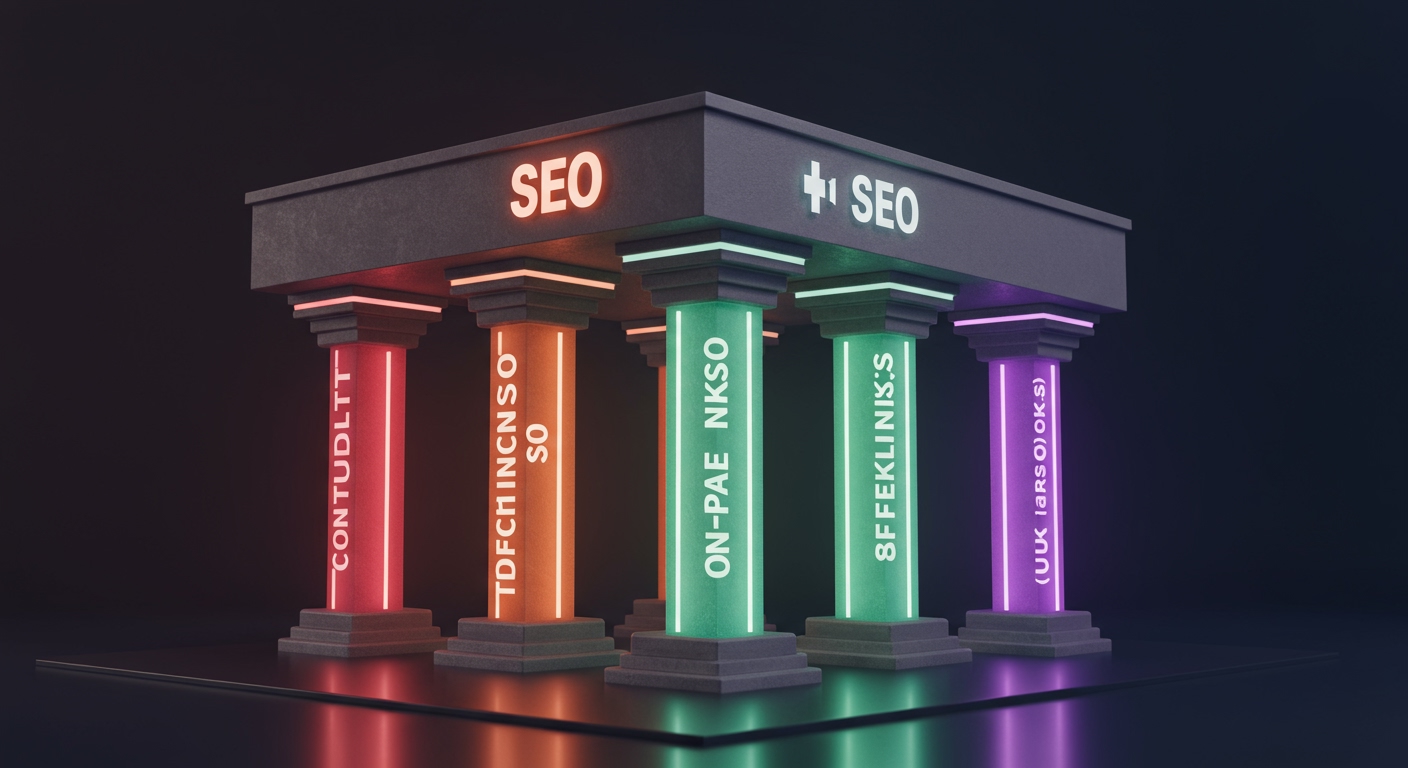Introduction: Navigating the Ever-Evolving World of Google SEO in 2025
In the dynamic realm of the internet, one constant remains: the critical importance of being visible on Google. Search Engine Optimization (SEO) isn’t just a buzzword; it’s the lifeline for online businesses, content creators, and anyone striving for digital presence. Its primary goal is simple yet powerful: appearing higher in Search Engine Results Pages (SERPs) to attract more organic traffic.
While the fundamental principles of SEO endure, 2025 marks a period where Google’s emphasis on user experience and, most notably, helpful content has intensified. This isn’t just about keywords anymore; it’s about providing genuine value.
In this essential guide, we’ll demystify the core mechanics of Google SEO in 2025. From understanding how Google processes information to mastering the key ranking factors and adapting to the latest changes, you’ll learn the actionable steps needed to elevate your website and drive consistent organic traffic.
How Google Works: The Foundation of SEO Success
Before diving into optimization tactics, it’s crucial to understand the ‘machine’ itself. Effective SEO starts with knowing how Google discovers, understands, and ranks content. Think of Google as having three primary stages:
1. Crawling: Google’s Discovery Process
This is where Google’s automated programs, known as spiders or Googlebot, scour the internet for new and updated web pages. They follow links, process sitemaps, and constantly explore the vast web landscape.
- What it is: Googlebot systematically visits web pages.
- How it happens: By following hyperlinks from known pages and processing XML Sitemaps.
- Key SEO takeaway: Ensure your website is easily discoverable. This means having proper internal linking, an up-to-date sitemap, and a correctly configured robots.txt file that doesn’t block essential content.
2. Indexing: Understanding Your Content
Once a page is crawled, Google doesn’t just store it; it analyzes and understands its content. This involves identifying keywords, categorizing information, and comprehending the context of the page. This understood content is then stored in Google’s massive index – a digital library of all known web pages.
- What it is: Google processes and stores the content of crawled pages.
- How it happens: Content analysis, keyword identification, understanding context and relationships.
- Key SEO takeaway: Your content must be unique, high-quality, and easily understandable by Google’s algorithms. Avoid duplicate content and ensure your main topics are clear.
3. Ranking: Matching Queries to Quality Content
When a user types a query into Google, the search engine’s algorithms spring into action. They sift through the billions of indexed pages to find the most relevant and high-quality results, presenting them in a ranked order within milliseconds.
- What it is: Google’s algorithms determine the best results for a given search query.
- How it happens: Thousands of google ranking factors are considered, including relevance, authority, and user experience.
- Key SEO takeaway: Your ultimate goal is to fulfill user intent and provide the absolute best possible answer or experience for a given search query.
Understanding this fundamental process of crawling indexing ranking is the bedrock of any successful google seo basics strategy. It’s how your website gets seen by the world.

The Pillars of Modern SEO: Key Ranking Factors for 2025
With Google’s fundamental processes in mind, let’s explore the core elements you need to optimize for to succeed in 2025 competitive landscape.
A. Content Quality & Helpfulness: The King (and Queen) of SEO
More than ever, Google is prioritizing content that genuinely serves its users. This is where the Helpful Content System comes into play. Google explicitly wants content created for people, first. This means your content should be:
- Original, in-depth, and comprehensive: Don’t just regurgitate information; offer unique insights and cover topics thoroughly.
- Meeting User Intent Precisely: Understand why someone is searching. Are they looking for information, a product, or a specific website? Tailor your content to their precise need (informational, navigational, transactional, commercial investigation).
- Avoiding Low-Quality Content: Steer clear of AI-generated spam or content published without human oversight and value-add. If it’s not useful to a human, it won’t rank.
Complementing the Helpful Content System is EEAT: Experience, Expertise, Authoritativeness, and Trustworthiness. This framework is crucial for all content, but especially for YMYL (Your Money Your Life) topics (e.g., health, finance, safety).
- Experience: Does the creator have first-hand experience with the topic?
- Expertise: Is the content written by someone knowledgeable in the field?
- Authoritativeness: Is the website and its content recognized as a go-to source by others?
- Trustworthiness: Is the information accurate, transparent, and safe?
By focusing on genuine content quality seo and demonstrating strong EEAT seo, you align perfectly with Google’s top priorities for 2025.
B. Technical SEO: Laying a Solid Foundation
Even the best content won’t rank if Google can’t access or understand it. Technical SEO ensures your site’s infrastructure is sound.
- Crawlability & Indexability: Make sure Googlebot can easily discover and add your pages to its index. This involves proper robots.txt configuration, using `noindex` tags wisely, and having well-structured XML Sitemaps.
- Site Structure: A logical hierarchy and clear navigation benefit both users and search engine bots, making your content easier to find and understand.
- Mobile-Friendliness: This is non-negotiable. With Google’s mobile-first indexing, your site must perform flawlessly on mobile devices.
- HTTPS: Security is a minor but confirmed ranking factor. An SSL certificate (HTTPS) encrypts data between your site and users.
- Schema Markup (Structured Data): This specialized code helps Google understand the context of your content (e.g., identifying a recipe, an FAQ section, or a product review). It can also lead to rich snippets in search results.
Mastering these elements of technical seo ensures your site is ready for Google to crawl and index effectively.

C. On-Page SEO: Optimizing Individual Pages
On-page SEO focuses on optimizing elements *on* your specific web pages to improve their rankings and relevance.
- Keyword Research & Placement: Identify the terms your audience uses and naturally integrate them into your content, not just stuffing them.
- Title Tags & Meta Descriptions: Craft compelling, keyword-rich snippets that entice users to click from the SERPs. These are your virtual storefronts in search results.
- Header Tags (H1, H2, H3, etc.): Use these to structure your content logically. Your H1 should be your main topic, and H2s/H3s should break down subtopics, improving readability for both users and search engines.
- Image Alt Text: Describe your images using relevant keywords. This improves accessibility for visually impaired users and helps Google understand the image’s content.
- Internal Linking: Strategically link related pages within your own site. This distributes



